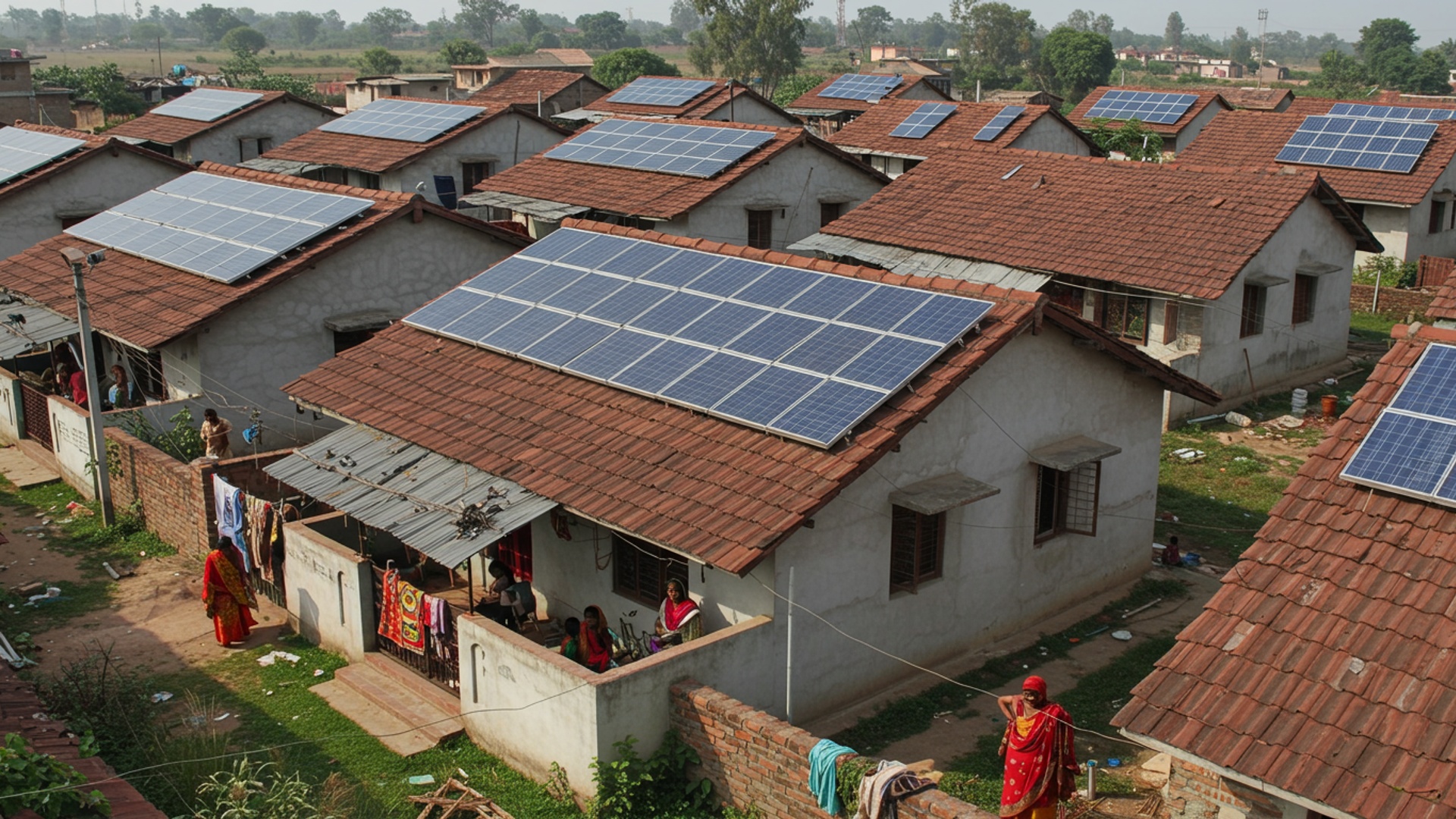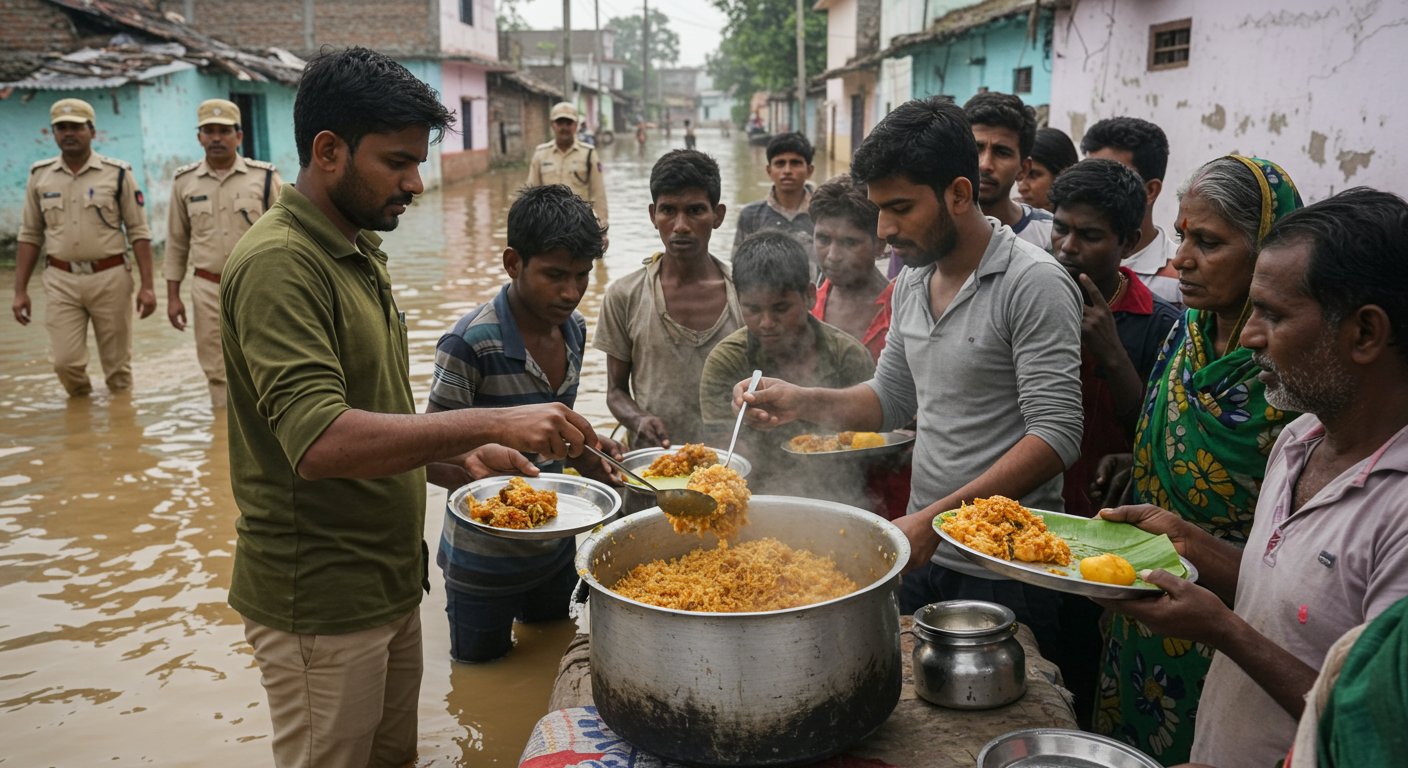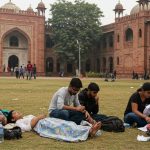Modhera, a small village in India, now runs entirely on solar power, 24 hours a day, every day. This groundbreaking achievement makes Modhera the first village in India to get all its electricity from the sun around the clock, marking a major step forward for clean energy in the nation. Powered by a mix of ground-mounted solar panels, rooftop systems on homes and government buildings. a large battery energy storage system, the village has ended its reliance on traditional power sources. This not only provides reliable electricity but also brings down power bills for residents, setting a new example for sustainable living across the country.
A Village Powered by the Sun
In the Mehsana district of Gujarat, a significant step towards clean energy has been taken by the village of Modhera. This village, known for its historic Sun Temple, has earned the distinction of becoming India’s first community to operate entirely on solar power, twenty-four hours a day, seven days a week. This achievement shows how modern technology can combine with traditional ways of life, providing a new path for energy use in rural areas across the country.
The journey to this energy independence began with a clear vision: to make sure all homes and farms in Modhera had their power needs met by solar energy. This effort was meant to create a working example for other villages to follow. The plan was first announced in March 2020.
How the Solar System Works
The solar project in Modhera uses a detailed system to ensure a constant supply of power. The main parts of this system include a large ground-mounted solar power plant and many solar panels placed on rooftops.
- A six-megawatt solar power plant is located in the nearby village of Sujjanpura. This plant generates a large amount of electricity.
- A Battery Energy Storage System (BESS) with a capacity of fifteen megawatt-hours (MWh) stores the solar power. This stored energy is used to provide electricity during the night or when the sun is not shining.
- More than 1,300 solar panels, each with a one-kilowatt capacity, are installed on the roofs of homes and public buildings throughout the village. These rooftop systems also feed power into the overall grid.
To help manage energy use, smart meters have been put in place in homes. These meters help people see and control their electricity usage better. Also, the project includes solar-powered street lights, charging stations for electric vehicles. even a special 3D light show at the Sun Temple that runs on solar energy.
Money and Support for the Project
The cost for this large-scale project was shared by two main groups. The central government of India, through its Ministry of New and Renewable Energy (MNRE). the state government of Gujarat, both provided funds. The total investment was about Rs 65 to 80 crore, which is roughly 8. 3 to 9. 7 million US dollars.
The Ministry of New and Renewable Energy (MNRE), Government of India, played a key role by starting and funding the pilot “Scheme for Solarisation of Sun-Temple Town of Modhera” in March 2020. The Government of Gujarat also supported the project with money and local work.
The Gujarat Power Corporation Limited (GPCL) was in charge of putting the project into action. Technical companies also helped, for example, GreenPowerMonitor provided systems to control the power plant and manage energy, which helps make the best use of the solar power.
Benefits for People in the Village
The change to solar power has brought many good things for the people living in Modhera. One of the biggest advantages is the large reduction in electricity bills. Many families now pay almost nothing for their power.
A village resident, Gadvi Kailashben, shared her experience: “Earlier, when solar was not there, I had to pay huge amount for the electricity bill — close to 2,000 rupees. But, with the installation of the solar, my electricity bill is now zero. Everything from the refrigerator to washing machine now runs on solar in my house. I am not paying even 1 rupee electricity bill now.”
Another benefit is the chance for villagers to earn money. If they produce more solar power than they use, they can sell the extra power back to the main electricity grid. This creates a new source of income for them.
The switch to solar energy has also made the village healthier by reducing pollution that comes from older ways of making electricity. It helps protect the environment for future generations. The project has also helped people in the village feel more in control of their lives and more self-reliant.
| Benefit Area | Description |
|---|---|
| Electricity Bills | Residents save 60% to 100%, many having zero bills. |
| Income Generation | Ability to sell excess solar power back to the grid. |
| Environmental Impact | Reduced carbon footprint and air pollution. |
| Quality of Life | Improved access to appliances and uninterrupted power. |
Words from crucial People
Many essential people have spoken about the success of Modhera. The United Nations Secretary-General, António Guterres, praised the village, calling it an example of “reconciliation between humankind and planet.” He also said that the project transforms lives, makes people healthier. brings more wealth, while helping to save our planet from climate change.
The UN Secretary-General stated, “Here where the Temple of Sun was built 1,000 years ago, there is a new Temple of Sun. It’s based on solar energy.”
India’s Prime Minister Narendra Modi has also shared his vision for Modhera. He has said that the village’s success is a pilot project showing how homes and farms can meet all their power needs using solar energy.
People who worked on the project also shared their thoughts. Rajendra Mistry, Chief Project Officer of Gujarat Power Corporation Limited, explained the key parts of the project, including the importance of the battery storage system for providing power all the time.
Looking to the Future
Modhera’s success provides a strong example for other parts of India and the world. It shows that it is possible to use renewable energy like solar power to meet all the energy needs of a community. This project fits well with India’s larger goals to use more clean energy and reduce its reliance on older, polluting power sources.
The Indian government has big plans to increase its use of renewable energy. The aim is to have 500 gigawatts of renewable energy capacity by 2030, with a large part of that coming from solar power. Projects like Modhera are key steps towards reaching these goals and building a greener, more self-reliant India. The Modhera model is inspiring policy makers to look at similar solar projects in other states.
![]()










